Chapter: 10th Mathematics : UNIT 1 : Relation and Function
Identifying the graphs of Linear, Quadratic, Cubic and Reciprocal functions
Identifying
the graphs of Linear, Quadratic, Cubic and Reciprocal functions
Graphs provide
visualization of curves and functions. Hence, graphs help a lot in
understanding the concepts in a much efficient way.
In this section, we
will be discussing about the identification of some of the functions through
their graphs. In particular, we discuss graphs of Linear, Quadratic, Cubic and
Reciprocal functions.
1. Linear Function
A function
f : R → R defined by f (x) = mx + c , m ≠ 0
is called a linear
function. Geometrically
this represents a straight line in the graph.
Some Specific Linear
Functions and their graphs are given below.
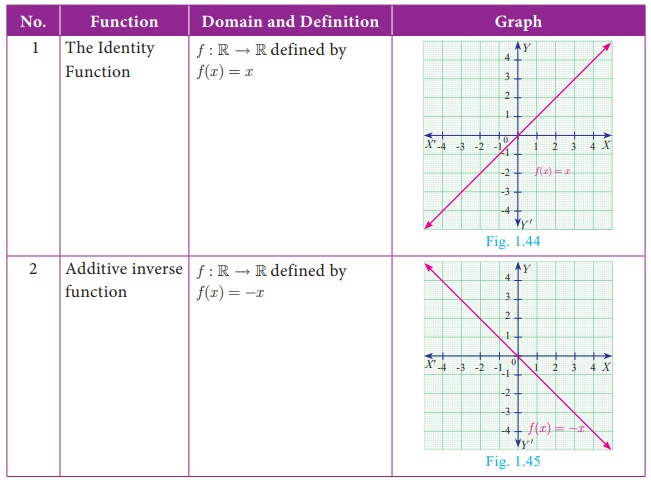
2. Modulus or Absolute valued Function
f : R → [0, ∞) defined
by f (x) =| x |
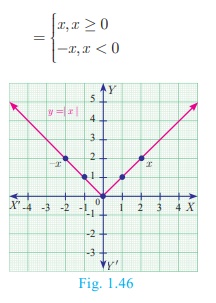
Note
·
Modulus function is not a linear function but it is composed of
two linear functions xand –x.
·
Linear functions are always one-one functions and has
applications in Cryptography as well as in several branches of Science and
Technology.
3. Quadratic Function
A function f : R → R defined by f (x)
= ax2 + bx + c, (a ≠ 0) is called a quadratic function
Some specific
quadratic functions and their graphs
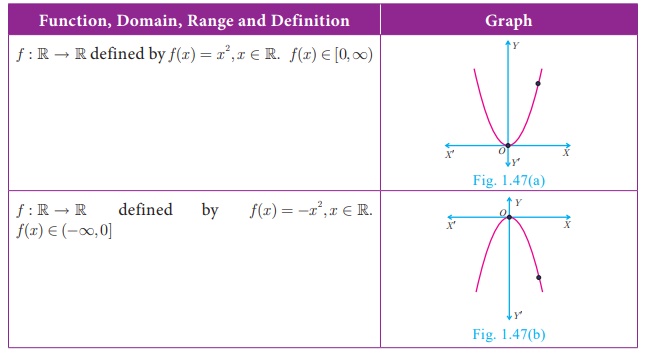
The equations of
motion of a particle travelling under the influence of gravity is a quadratic
function of time. These functions are not one – one. (Why?)
4. Cubic Function
A function f : R → R defined by f (x) = ax3 + bx2
+ cx + d,(a ≠ 0) is called a cubic function. The
graph of f (x) = x3 is shown in Fig.1.48.

5. Reciprocal Function
A function f : R − {0} → R defined by f (x)
= 1/x is called a reciprocal function (Fig.1.49).
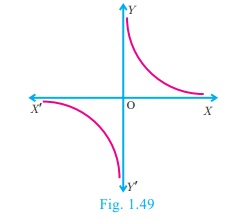
6. Constant Function
A function f : R → R defined by f (x)
= c, for all x ∈ R is called a constant function (Fig.1.50).
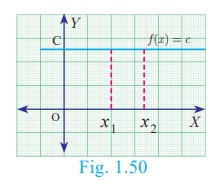
Related Topics